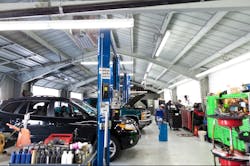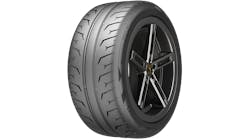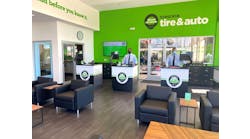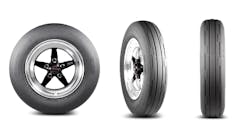This MTD exclusive is provided by tire industry veteran Jeff Morgan, executive director of Dealer Strategic Planning, the DSP Group.
Wow! What a year 2020 has been. Talk about a roller-coaster! The year started out like any other, with great expectations. We started hearing rumbling about some virus, but didn’t really pay much attention, at first.
Then came March. The COVID-19 pandemic was real, businesses started shutting down, governments began locking down and tire dealerships started to feel the hit.
Fortunately, we were identified as “essential businesses” and could remain open. But customers were scared to come in. April hurt - bad!
We scrambled for whatever assistance we could get, like Paycheck Protection Plan loans. We adjusted our hours and our processes - anything to help us get by.
As May progressed, we began to see a light ahead. Then came the summer, which produced record numbers for many!
We carried that momentum into the fall. Then we started mini roller-coasters of ups and downs, as COVID-19 cases increased again. However, through all of this, you kept moving forward and now you have reached the end of this very challenging year.
You made it!
Now, it’s time for us to look forward and think of what we need to do to make 2021 the best year ever. This past year forced many of us to work “in” our business, with everything we were dealing with. Now you should plan on how you will work “on” your business in 2021.
This should have already started with creating your budgets for 2021. I recommend that you should use 2019 as your baseline, since 2020 was so crazy.
Consider your goals for sales and gross profit. Month by month, where do you want and need to be? As with any goal, it should be realistic, but also challenging.
I have seen too many people set goals that they would achieve without really trying. In the same light, I have seen people set goals that are simply unrealistic. All this does is create frustration when you do not get close to achieving it.
Setting objectives is really the easier part. Stating that you want a 5% sales improvement and that you want to grow your gross profit by 3 percentage points is one thing.
However, without a specific plan around how you will achieve these things, you are simply hoping to get there. As the old saying goes, “A goal without a plan is a wish.” Do not leave your success to chance! Create specific plans around the actions you will take to make these goals a reality.
Give yourself and your business specific tasks that will align with reaching your objectives. For example, if your goal is to increase your sales by 5% over last year, what steps will you and your employees follow in order to get there?
One way to accomplish this is to increase the quality and quantity of vehicle inspections you perform every day. Set a daily inspection goal. (I would recommend a percentage to your car count.)
Just as importantly, set an expectation with your technicians that only thorough and accurate inspections will be accepted. Once your “inspection culture” is strong, sales will come.
Perhaps your best sales opportunity exists through just getting more customers in the door? Obviously, you want to consider marketing options, but also look at the internal opportunities that exist.
Are your employees proactively trying to find ways to get customers off the phone and in the store?
Are you willing to offer a price match guarantee to customers who have come into your store to price tires or are you going to let them leave your store to check for themselves?
Are your employees actively offering appointments to get a customer in or are they simply waiting for the customer to ask?
All the advertising in the world won't do you any good if your people aren't finding a way to get the customer to hand over their keys. Often, you will find the biggest opportunity to get more cars into your service bays lies with your people, as opposed to your advertising.
If gross profit improvement as a percent to sales is your goal, again you need to have specific, actionable plans in place to make that needle move.
As I have mentioned numerous times in this column, perhaps it is time to raise your labor rate? That will make an impact right away.
However, there are additional steps you can take. Focusing on labor-intensive services will certainly help boost your gross profit. Our industry gives us a couple of great opportunities to do that in the form of alignments and wheel balances.
Make it a point that any vehicle that gets more than one new tire also gets on your alignment rack, even if in the form of a free check. Odds are high that you will find the alignment needs adjustment.
When you present the alignment printout showing the angles needing adjustment, it is validation to the customer that this service is needed, and more sales are likely to occur.
When a customer only replaces two tires, suggest balancing all four. Quite frankly, it really is the right thing to do. This is especially true if the customer puts the new tires on the rear and rotates the old rears to the front.
If those tires were just slightly out of balance on the rear, it is likely that the driver wouldn’t notice. However, put those tires on the front and now the steering wheel is vibrating at 65 miles per hour.
Not only will this get the driver's attention. He or she will likely come back to you very dissatisfied and you might end up balancing those tires for free.
Perhaps simply collecting for what you do will help. I see way too many instances of dealers devaluing their products and services by giving discounts that are not needed.
Sometimes we offer to perform a check or a diagnostic at no charge if the customer lets us do the repair. Why? Was the check or diagnostic not worth it?
I recently had to have shoulder surgery. Trust me - my doctor did not give me my exam and tests for free since he was doing the surgery.
The check or diagnostic helps save the customer money by pinpointing the issue, as opposed to just throwing parts at it to see what sticks. It is valuable and you should collect for it.
The same goes for giving a discount of some kind just to try and sell the job. How often have you said, “And if you let us do it today, we’ll knock off 10%?” Again, why?
All we have really done is told the customer that our original price was too high to begin with. This creates doubt in their mind about all of your prices.
Instead of selling on price, start selling the benefits and value of the product or service. When explaining the benefits, understand that this practice answers the customer’s question, “What’s in it for me?” The more they understand, the greater the value. At that point, the price becomes secondary.
Keep in mind that actionable plans are not just for reaching your sales and gross profit goals. Your budget and planning must also include expenses and how to manage them. Again, you cannot leave this to chance.
More than just reviewing your equipment needs and planning purchases, you need to have a plan to address the most controllable expense of all, which is payroll.
Once you have a plan to hit your sales and gross profit goals, now you can determine how much payroll you can afford to get there.
As opposed to measuring your payroll as a percent to sales, measure it as a percent to gross profit. Besides, gross profit is what is going into the bank to write those paychecks against. Depending on the size of your business, payroll should be 41% to 45% of your gross profit.
Now that you have set your payroll target, you need to have a plan to achieve it. This starts with proper scheduling.
You need to build your work schedules with the intent to come in under your target number. This will cover you for the unexpected.
Also, schedule to minimize overtime for hourly employees. A good way to do this is to build the schedule with the closer scheduled to work until one hour after store closing time. If you schedule this person to leave at closing time, you are instantly adding additional overtime that you have not budgeted for.
Scheduling in the manner I suggest will either keep your payroll as intended or even come in better.
Now that you have built your schedule, you need to monitor results and payroll daily. If your sales and gross profit numbers are not where you need them, be ready to adjust the schedule, send someone home early, take a longer lunch, come in later, etc.
Putting this discipline into your payroll management will help you better manage your expenses and bottom line.
Setting objectives that you want to attain in 2021 is important. You need to know where you want to be. But more importantly, you need a road map to get there.
Give each of your goals specific action items that you can track and manage to ensure that the objectives you set are obtained. This puts you in control.
It is so much better to take control of your success than being a sideline observer who is hoping for the best.
Tire industry veteran Jeff Morgan is the executive director of Dealer Strategic Planning, the DSP Group. He can be reached at [email protected] or (651) 846-9871. For more, see www.20DSP.com.



